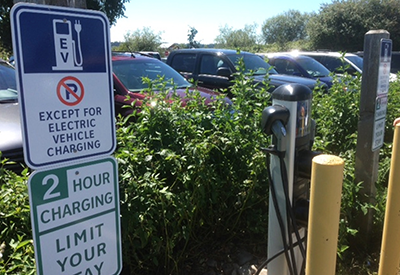A Look At Energy’s Future

December 7, 2017
More than 135 years ago, the electrical revolution swept across North America, lighting cities, towns and factories from coast to coast and changing the face of our two nations for the better.
We are in the midst of a new electrical revolution that brings many challenges but offers numerous opportunities for energy security, good jobs, and combating climate change.
The electrical system many of us grew up with is on the way out.
The existing system, based on coal-powered generation plants providing energy to a single geographically limited area represents the industry’s past, replaced by an increased dependence on natural gas and renewable energy sources like solar and wind, transported over thousands of miles to customers in multiple markets.
During this time of significant changes, it is vital that lawmakers, union leaders, and the energy industry take the lead in helping to transition to a cleaner, more sustainable energy sector while expanding the reliability of the electrical grid, and ensuring good jobs for working people.
The decline of coal means it is more important than ever that lawmakers work to maintain our existing nuclear facilities. Nuclear, like coal, is a baseload energy source, meaning it provides power 24 hours a day and seven days a week.
The drastic drop in the price of natural gas has not just hurt coal — it hurts nuclear as well. But our energy security requires a reliable source of baseload energy. And as a carbon-free energy source, nuclear remains the best option.
It is also imperative that we continue to invest in alternative energies — not just solar and wind, but in clean coal technologies that will allow us to tap into our existing coal supplies while slashing carbon emissions.
The shuttering of dozens of coal plants over the last decade has wreaked havoc on many communities and put many of our members out of a job. At the same time, solar and wind, not to mention the gas boom, has meant new work for many.
We need a bipartisan energy plan with a rational timetable for the retirement of coal facilities that can help maintain existing jobs and minimize the pain to those communities that depend on them. At the same time, we need a concentrated effort to recruit more workers into the energy industry. Utilities will have to replace nearly half of their workforce within the next 10 years as many existing workers are already approaching retirement.
Our industry is changing. And the IBEW is changing along with it, by introducing new training curricula and technologies into our apprenticeships and going after work and jobs in rising energy sectors.
But as we change, we are committed to protecting the jobs we already have and reminding the public that there is no single magic bullet when it comes to energy. Real progress requires tapping into all of North America’s resources. And working together as one to get the job done.










![Guide to the Canadian Electrical Code, Part 1[i], 26th Edition – A Road Map: Section 10 – Grounding and Bonding](https://electricalindustry.ca/wp-content/uploads/2022/11/Guide-CE-Code-2.png)





